Category: Recommended Reading
Priest of The Phallus
Rosita Sweetman at the Dublin Review of Books:
 Burning Man, a new biography of Lawrence stuffed with fascinating research – his battleground of a childhood, his “raid” on literary London, life in Cornwall with Katherine Mansfield and John Middleton Murry, lifelong denials of, and battles with, tuberculosis, referred to by him as “the bronchials”, his first meeting with Frieda von Richthofen, his “destiny” and life partner, fights between them, their penniless travels on foot, donkey and ferry throughout Europe, in Florence with Norman Douglas, the pilgrimage to New Mexico and Mabel Dodge, her quest to “save” the Pueblo Indians, his novels, poems and literary criticisms ‑ is wonderful in many ways; but here’s my caveat: can a new biography of Lawrence really ignore Kate Millet’s critique of his work, declaring him one of the subtlest propagators of sexist, patriarchal propaganda? Can his novels, seen by Millet as laying the groundwork for today’s pornography, really stand unquestioned?
Burning Man, a new biography of Lawrence stuffed with fascinating research – his battleground of a childhood, his “raid” on literary London, life in Cornwall with Katherine Mansfield and John Middleton Murry, lifelong denials of, and battles with, tuberculosis, referred to by him as “the bronchials”, his first meeting with Frieda von Richthofen, his “destiny” and life partner, fights between them, their penniless travels on foot, donkey and ferry throughout Europe, in Florence with Norman Douglas, the pilgrimage to New Mexico and Mabel Dodge, her quest to “save” the Pueblo Indians, his novels, poems and literary criticisms ‑ is wonderful in many ways; but here’s my caveat: can a new biography of Lawrence really ignore Kate Millet’s critique of his work, declaring him one of the subtlest propagators of sexist, patriarchal propaganda? Can his novels, seen by Millet as laying the groundwork for today’s pornography, really stand unquestioned?
more here.
Funny Business: Two Comics Anthologies
Jackson Arn at Art in America:
 It’s terrifying how optimistic that era’s pessimism now seems. In Adventures in Paradise’s view of the future, we’re all fucked, to be sure, but at least we get to go to Mars, hang out with sentient robots, expand, accelerate, etc. The last four decades seems to have brought something like a great lowering of expectations, which David Graeber described like so: “A timid, bureaucratic spirit suffuses every aspect of cultural life. It comes festooned in a language of creativity, initiative, and entrepreneurialism. But the language is meaningless. . . . The greatest and most powerful nation that has ever existed has spent the last decades telling its citizens they can no longer contemplate fantastic collective enterprises.” Graeber singled out scientists and politicians for their contracting imaginations, but the creative class isn’t exempt— just look at the extraordinary success of Marvel Studios, the company whose fizzling pyrotechnics and brand-management-disguised-as-entertainment are a shadow of the American comic-book tradition to which Gary Panter has added so much.
It’s terrifying how optimistic that era’s pessimism now seems. In Adventures in Paradise’s view of the future, we’re all fucked, to be sure, but at least we get to go to Mars, hang out with sentient robots, expand, accelerate, etc. The last four decades seems to have brought something like a great lowering of expectations, which David Graeber described like so: “A timid, bureaucratic spirit suffuses every aspect of cultural life. It comes festooned in a language of creativity, initiative, and entrepreneurialism. But the language is meaningless. . . . The greatest and most powerful nation that has ever existed has spent the last decades telling its citizens they can no longer contemplate fantastic collective enterprises.” Graeber singled out scientists and politicians for their contracting imaginations, but the creative class isn’t exempt— just look at the extraordinary success of Marvel Studios, the company whose fizzling pyrotechnics and brand-management-disguised-as-entertainment are a shadow of the American comic-book tradition to which Gary Panter has added so much.
more here.
The plants that change our consciousness
Sophie McBain in New Statesman:
 It is no coincidence that caffeine and the minute-hand on clocks arrived at around the same historical moment, the acclaimed food and nature writer Michael Pollan argues in his latest book, This is Your Mind on Plants. Both spread across Europe as labourers began leaving the fields, where work is organised around the sun, for the factories, where shift-workers could no longer adhere to their natural patterns of sleep and wakefulness. Would capitalism even have been possible without caffeine?
It is no coincidence that caffeine and the minute-hand on clocks arrived at around the same historical moment, the acclaimed food and nature writer Michael Pollan argues in his latest book, This is Your Mind on Plants. Both spread across Europe as labourers began leaving the fields, where work is organised around the sun, for the factories, where shift-workers could no longer adhere to their natural patterns of sleep and wakefulness. Would capitalism even have been possible without caffeine?
The introduction of caffeine to Europe in the early 17th century coincided with the waning of the mystical medieval mindset and the rise of the cool-headed rationalism of the Enlightenment. Before the arrival of tea and coffee, alcohol was the safest thing to drink – or at least, safer than most water – so perhaps it is little wonder that the permanently sozzled intellectuals of the Middle Ages were prone to magical thinking. In contrast, caffeine can intensify “spotlight consciousness”, which illuminates a single point of attention, enhancing our reasoning skills. Voltaire had such faith in coffee’s power to sharpen his mind that he is said to have drunk up to 72 cups a day. Balzac sometimes dispensed with drinking coffee altogether and instead ate the grounds for a more powerful hit.
In the Nineties, scientists at Nasa fed a variety of psychoactive substances to spiders to observe the effect on their web-making. The spider given caffeine spun a completely useless web, with no symmetry or centre, and holes large enough for a bird to get through. The web was much more dysfunctional than those spun by spiders high on cannabis or LSD. It’s unclear from the book (and from my subsequent Google searches) whether the spider was given the arachnid equivalent of a single cappuccino or a more Balzacian dose, which makes the comparison with other drugs less helpful, but Pollan’s point is that caffeine changes us more than we realise. Anyone who has accidentally overdosed on coffee and found themselves too jittery to function will identify with the caffeinated spider, who was extremely busy being unproductive. Perhaps the spider could even serve as a symbol for low-paid workers under present-day, hyper-caffeinated capitalism, for whom hard work yields so few personal rewards.
More here.
After a Six-Year Sojourn in Space, Freeze-Dried Mice Sperm Produce Healthy Pups
Shi En Kim in Smithsonian:
 Biologist Teruhiko Wakayama envisions that one day, humans could populate other planets and seed new civilizations with animal sperm and egg cells they bring from Earth. Expanding humanity’s footprint into deep space will necessitate that humans ship out “Noah’s Arks” of this genetic material, each batch of cells a delegate of Earth’s biodiversity.
Biologist Teruhiko Wakayama envisions that one day, humans could populate other planets and seed new civilizations with animal sperm and egg cells they bring from Earth. Expanding humanity’s footprint into deep space will necessitate that humans ship out “Noah’s Arks” of this genetic material, each batch of cells a delegate of Earth’s biodiversity.
But before Wakayama’s vision becomes reality, first comes the task of verifying that reproductive cells can survive long journeys through space. Outside of Earth’s magnetic shield, radiation is 50 to several thousand times higher than back on Earth, and it can potentially damage cellular DNA. Now, Wakayama’s latest research, published this June in Science Advances, has made a promising inroad into prepping genetic material for interstellar transport: His team has found that mice sperm can indeed stay viable in space aboard the International Space Station (ISS) for up to six years—if they are freeze-dried beforehand
“It’s a very interesting paper,” says Ulrike Luderer, a reproductive toxicologist at University of California, Irvine who wasn’t involved in the study. “It’s the first time that any form of mammalian sperm have been in space for that length of time—nearly six years, the longest exposure.” To carry out the freeze-drying process, the researchers froze sperm from 65 mice with liquid nitrogen at a temperature of negative 320 degrees Fahrenheit. Then, they exposed their frozen cells to a vacuum environment to quickly remove all water. “The sperm became powder [resembling] instant coffee,” writes Wakayama, who researches at Japan’s University of Yamanashi.
More here.
Wednesday Poem
Dance With Me
The people left alone
are beautiful.
They sometimes dance
and wonder about the planets
and sex and one another.
The people get angry sometimes
and sometimes cry.
They make art and tacos
and want to love one another.
The people left alone
are diamonds scattered
in the meadow.
Hold someone to the light.
Watch them sparkle.
Jeff Weddle
from Poetry Feast
Tuesday, July 6, 2021
“Home in the World” by Nobel laureate Amartya Sen
Abhrajyoti Chakraborty in The Guardian:
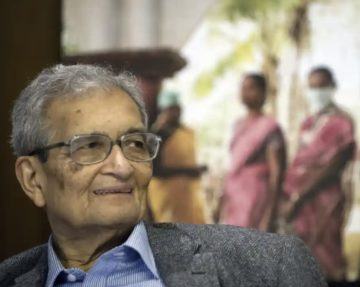 Amartya Sen was 18 when he diagnosed his own cancer. Not long after he had moved to Calcutta for college, he noticed a lump growing inside his mouth. He consulted two doctors but they laughed away his suspicions, so Sen, then a student of economics and mathematics, looked up a couple of books on cancer from a medical library. He identified the tumour – a “squamous cell carcinoma” – and later when a biopsy confirmed his verdict he wondered if there were in effect two people with his name: a patient who had just been told he had cancer, but also the “agent” responsible for the diagnosis. “I must not let the agent in me go away,” Sen decided, “and could not – absolutely could not – let the patient take over completely.”
Amartya Sen was 18 when he diagnosed his own cancer. Not long after he had moved to Calcutta for college, he noticed a lump growing inside his mouth. He consulted two doctors but they laughed away his suspicions, so Sen, then a student of economics and mathematics, looked up a couple of books on cancer from a medical library. He identified the tumour – a “squamous cell carcinoma” – and later when a biopsy confirmed his verdict he wondered if there were in effect two people with his name: a patient who had just been told he had cancer, but also the “agent” responsible for the diagnosis. “I must not let the agent in me go away,” Sen decided, “and could not – absolutely could not – let the patient take over completely.”
This self-division is characteristic of Home in the World – “world” being here no more than the university campuses Sen has lived in all his life – and places it in the tradition of CLR James’s Beyond a Boundary and Nirad C Chaudhuri’s The Autobiography of an Unknown Indian: books that, in their primacy of thought over feeling, reflect the psychic extent of the colonial encounter. The empire loomed early in Sen’s life, though he was born and schooled in Santiniketan, the idyllic campus set up by the poet Rabindranath Tagore in rural Bengal.
More here.
Vaccines are still beating the variants, but the unvaccinated world is being pummeled
Ed Yong in The Atlantic:
 Fifteen months after the novel coronavirus shut down much of the world, the pandemic is still raging. Few experts guessed that by this point, the world would have not one vaccine but many, with 3 billion doses already delivered. At the same time, the coronavirus has evolved into super-transmissible variants that spread more easily. The clash between these variables will define the coming months and seasons. Here, then, are three simple principles to understand how they interact. Each has caveats and nuances, but together, they can serve as a guide to our near-term future.
Fifteen months after the novel coronavirus shut down much of the world, the pandemic is still raging. Few experts guessed that by this point, the world would have not one vaccine but many, with 3 billion doses already delivered. At the same time, the coronavirus has evolved into super-transmissible variants that spread more easily. The clash between these variables will define the coming months and seasons. Here, then, are three simple principles to understand how they interact. Each has caveats and nuances, but together, they can serve as a guide to our near-term future.
More here.
The Chinese Communist Party may yet go the way of its Soviet peer
George Magnus in Prospect:
 The Chinese Communist Party (CCP) will trumpet its own version of history as it celebrates its centenary on Thursday, and remind its citizens and the world of its centrality to China’s lofty economic and global aspirations in the decades ahead. It rules with a swagger about its accomplishments and a grand narrative about the future, and yet also with a repression and prickliness that are more consistent with a state of siege. China’s party leaders still fret about what happened to their Soviet counterparts and are determined to avoid a similar fate. China’s Leninist party has fared much better, but it nevertheless has good reason to be wary that the 2020s will be an important acid test.
The Chinese Communist Party (CCP) will trumpet its own version of history as it celebrates its centenary on Thursday, and remind its citizens and the world of its centrality to China’s lofty economic and global aspirations in the decades ahead. It rules with a swagger about its accomplishments and a grand narrative about the future, and yet also with a repression and prickliness that are more consistent with a state of siege. China’s party leaders still fret about what happened to their Soviet counterparts and are determined to avoid a similar fate. China’s Leninist party has fared much better, but it nevertheless has good reason to be wary that the 2020s will be an important acid test.
There are few direct parallels between modern China’s status as an economic behemoth and hub of the global economy and that of the Soviet Union, once facetiously referred to as “Upper Volta (as Burkina Faso was then known) with rockets.” Built on a centralised production and planning system and with heavy military and internal security resource demands, the Soviet Union never advanced beyond a backward consumer sector, in which durable goods were distributed mainly according to political status and privilege. Broadly defined to include some public consumption, Soviet consumption per head was never more than about 10-15 per cent of what it was in the United States, while income per head when Mikhail Gorbachev came to power was around $6,500, or about a quarter of the American level at the time.
Yet these numbers should also give us pause for thought.
More here.
Zero: A very short film by Sheherzad Preisler
ZERO from Sheherzad Preisler on Vimeo.
Celebrating N. Scott Momaday
Julian Brave NoiseCat at The Paris Review:

Putting Momaday’s work in conversation with the past half century of Indigenous activism it has paralleled is, I think, an illuminating way to consider both his books and the ideas undergirding Native movements. Voice is a fundamental building block for change, and ideas often have roots that run deeper than their political valence. If Momaday can speak so authentically to the Indigenous experience—our long odyssey through an imperial apocalypse, and the enduring power of our ceremonies and cultures, rooted in land and place, as organizing and governing principles—without saying a word about a political party, politician, or even an act of protest, then that just illustrates how fundamental the things he depicts are to our people. Epistemology, grounded in who we are and where we come from—our very being—becomes ontology. It’s from that starting place, that hearth, that you get the Alcatrazes, Standing Rocks, and Lanada War Jacks.
more here.
American Masters | N. Scott Momaday: Words From a Bear
https://www.youtube.com/watch?v=P1-m9IuPsnk
The Fall of Robespierre
John Adamson at Literary Review:
 For 27 July 1794, ‘9 Thermidor Year II’ in the new republican calendar, has long been recognised as a ‘pivotal moment’ in the French Revolution. Until that point, the course of the revolution had been marked by increasing radicalism: France had gone from constitutional monarchy after the fall of the Bastille in 1789, to kingless republic in 1792, to wartime police state from 1793. After the events of 9 Thermidor, the trend was towards increasing conservatism. The democratic and reformist energies of the early revolution were mostly dissipated. Within a decade, France was again a monarchy, with a Corsican-born emperor in place of a Bourbon king.
For 27 July 1794, ‘9 Thermidor Year II’ in the new republican calendar, has long been recognised as a ‘pivotal moment’ in the French Revolution. Until that point, the course of the revolution had been marked by increasing radicalism: France had gone from constitutional monarchy after the fall of the Bastille in 1789, to kingless republic in 1792, to wartime police state from 1793. After the events of 9 Thermidor, the trend was towards increasing conservatism. The democratic and reformist energies of the early revolution were mostly dissipated. Within a decade, France was again a monarchy, with a Corsican-born emperor in place of a Bourbon king.
This sudden bouleversement has conventionally been explained as a reaction to the guillotine-fixated excesses of the Revolutionary Government of Year II (1793–4) and the austere, donnish 35-year-old bachelor lawyer from Arras, Maximilien Robespierre, who was its malign presiding genius.
more here.
A leading neuro-scientist shares notes on intelligence
From Kurzweil AI:
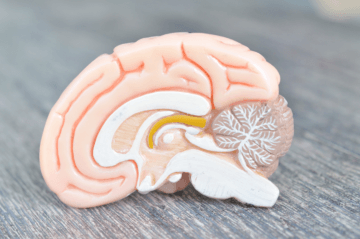 I spent many years thinking about how to design an imaging study that could identify the unique features of the creative brain. Most of the human brain’s functions arise from the 6 layers of nerve cells and their dendrites embedded in its enormous surface area, called the cerebral cortex — which is compressed to a size small enough to be carried around on our shoulders through a process known as gyrification — essentially, producing lots of folds.
I spent many years thinking about how to design an imaging study that could identify the unique features of the creative brain. Most of the human brain’s functions arise from the 6 layers of nerve cells and their dendrites embedded in its enormous surface area, called the cerebral cortex — which is compressed to a size small enough to be carried around on our shoulders through a process known as gyrification — essentially, producing lots of folds.
Some regions of the brain are specialized, receiving sensory information from our eyes, ears, skin, mouth, or nose, or controlling our movements. We call these regions the primary visual, auditory, sensory, and motor cortices. They collect information from the world around us and execute our actions. But we would be helpless, and effectively non-human, if our brains consisted only of these regions.
But the most developed regions in the human brain are known as association cortices. These regions help us interpret and make use of the specialized info collected by the visual, auditory, sensory, and motor regions. For example, as you read these words on a page or a screen, they register as black lines on a white background in your primary visual cortex. If the process stopped at that point, you wouldn’t be reading at all.
To read, your brain, through miraculously complex processes that scientists are still figuring out, needs to forward those black letters on — so that meaning is attached to them, and then on to language ability in the brain, so that the words are connected to sentences, and on to associated memories and given richer meanings. These associated memories and meanings constitute a “verbal lexicon” — it can be accessed for reading, speaking, listening, and writing.
Each person’s lexicon is a bit different, even if the words are the same, because each person has different memories and meanings. One difference between a legendary playwright such as William Shakespeare and — for example — the typical stock broker, is the size and richness of his or her associations, and the complexity of other connections.
More here.
Cost of enforced modesty
Pervez Hoodbhoy in Dawn:
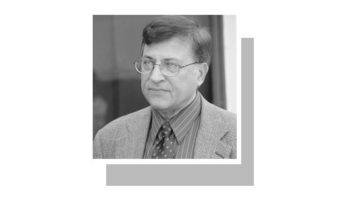 IMPLEMENTATION of the PTI’s Single National Curriculum has started in Islamabad’s schools and for students the human body is to become a dark mystery, darker than ever before. Religious scholars appointed as members of the SNC Committee are supervising the content of schoolbooks in all subjects including science. In the name of Islamic morality they have warned textbook publishers not to print any diagram or sketch in biology textbooks that show human figures “sans clothes”.
IMPLEMENTATION of the PTI’s Single National Curriculum has started in Islamabad’s schools and for students the human body is to become a dark mystery, darker than ever before. Religious scholars appointed as members of the SNC Committee are supervising the content of schoolbooks in all subjects including science. In the name of Islamic morality they have warned textbook publishers not to print any diagram or sketch in biology textbooks that show human figures “sans clothes”.
For the teaching of biology this surpasses existing de facto prohibitions on teaching evolution, the foundational principle of biological sciences. Illustrations are crucial to explain the digestive system (with both entrance and exit points) and human reproduction, as well as the mammary gland. Diagrams, sketches and human skeletal forms cannot be draped. Excluding these from schoolbooks reduces the teaching of biology to a farce.
Inhibitions about the human body, of course, have been around for much longer than SNC. It’s just that henceforth there will be still more. I have looked at a few biology textbooks published in past years by the Punjab and Sindh Textbook Boards and could not find meaningful accounts of mammalian organs and processes needed to sustain life on earth.
In one book from 1996 I did find a diagrammatised rabbit. But with essential parts fuzzed out, it is difficult to figure out whether it was male or female or the equipment that rabbits need to reproduce themselves. That someone should think an un-fuzzed diagram of this little animal would titillate students or stimulate promiscuous behaviour stumps me.
More here.
Tuesday Poem
Fort William
A white launch, sails down, plows across the firth.
A gray day, now-and-then rain, far hills visible but
their intense greens muted by the mist. October, Scotland,
Fort William. Sunday. I sit in a pub looking out at a
sea finger through the window behind two leatherette
club chairs. The table at my left fills with young Scottish
girls drinking beer and talking – occasionally the one
gets up to pump a refill or a pint for a newcomer. I wonder
at the intense femaleness of their energy, where it can go,
what will happen to it if it can’t go anywhere. The young
male cook comes in to flirt. He hems and haws about mussels
and mustard and is soon blown back to the kitchen. Outside,
gulls tilt their wings white to the gray light. A squadron
of low black birds skims above the water. Some of the women
have risen. Those who don’t have to stay, go. Now they’re
all gone, even the bar maid, so I half listen to four Brits
chatter before a gambling machine blinking red and white
like the background to the credits in a science fiction movie.
Across the water, a white heron stands patient as the rain.
Sunday, July 4, 2021
In Praise of Native Americanism
Justin E. H. Smith in Tablet:
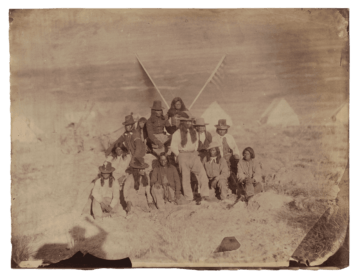 In Call Me Ishmael, Charles Olson’s magnificent 1947 study of Herman Melville’s Moby-Dick, the American poet writes: “I take SPACE to be the central fact to man born in America.” Using a common alternative title for the 1851 novel, Olson compares it to Walt Whitman’s self-published paean to his country: “The White Whale is more accurate than Leaves of Grass. Because it is America, all of her space, the malice, the root.”
In Call Me Ishmael, Charles Olson’s magnificent 1947 study of Herman Melville’s Moby-Dick, the American poet writes: “I take SPACE to be the central fact to man born in America.” Using a common alternative title for the 1851 novel, Olson compares it to Walt Whitman’s self-published paean to his country: “The White Whale is more accurate than Leaves of Grass. Because it is America, all of her space, the malice, the root.”
For many years, I took Moby-Dick to be American only by technicality: Virtually all of the story takes place on the high seas, with a multiethnic mix of characters; the voice of the author seems more at home in the broader North Atlantic maritime Anglo-Hibernian realm, which by some measures reaches down from Nova Scotia as far south as Cape Cod, than in the depths of the American continent itself.
Melville’s true epitome of America, it seemed to me, was not Moby-Dick, but The Confidence-Man of 1857. This novel, whose events unfold almost entirely in the cramped rooms of a steamboat on the Mississippi River, is as claustrophobic as Moby-Dick is expansive, and as conducive to contraction and paranoia as its predecessor is to the free-ranging and unbounded assertion of will.
More here.
AI Designs Quantum Physics Experiments Beyond What Any Human Has Conceived
Anil Ananthaswamy in Scientific American:
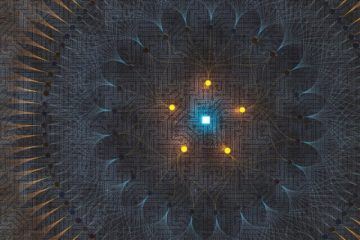 Quantum physicist Mario Krenn remembers sitting in a café in Vienna in early 2016, poring over computer printouts, trying to make sense of what MELVIN had found. MELVIN was a machine-learning algorithm Krenn had built, a kind of artificial intelligence. Its job was to mix and match the building blocks of standard quantum experiments and find solutions to new problems. And it did find many interesting ones. But there was one that made no sense.
Quantum physicist Mario Krenn remembers sitting in a café in Vienna in early 2016, poring over computer printouts, trying to make sense of what MELVIN had found. MELVIN was a machine-learning algorithm Krenn had built, a kind of artificial intelligence. Its job was to mix and match the building blocks of standard quantum experiments and find solutions to new problems. And it did find many interesting ones. But there was one that made no sense.
“The first thing I thought was, ‘My program has a bug, because the solution cannot exist,’” Krenn says. MELVIN had seemingly solved the problem of creating highly complex entangled states involving multiple photons (entangled states being those that once made Albert Einstein invoke the specter of “spooky action at a distance”). Krenn, Anton Zeilinger of the University of Vienna and their colleagues had not explicitly provided MELVIN the rules needed to generate such complex states, yet it had found a way. Eventually, he realized that the algorithm had rediscovered a type of experimental arrangement that had been devised in the early 1990s. But those experiments had been much simpler. MELVIN had cracked a far more complex puzzle.
More here.
The Comedy Wildlife Photography Awards 2021
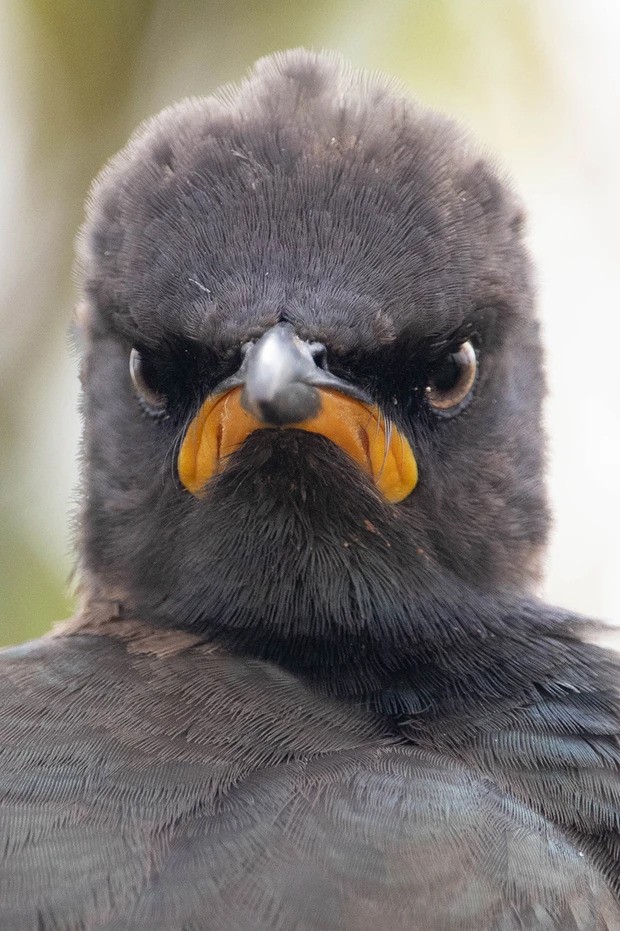
More here.
China and the Lure of Global Capitalism
Macabe Keliher in the Boston Review:
 In September 1793, British envoy Lord Macartney was given a tour of the Qing summer palace north of Beijing. Earlier in his trip he presented the Qianlong emperor with gifts of two enameled watches of “very fine workmanship,” a telescope, Birmingham sword blades, and fine British clothes, among other items meant to awe the aging monarch with the superiority of British technology and manufacturing and convince him to sign a trade agreement.
In September 1793, British envoy Lord Macartney was given a tour of the Qing summer palace north of Beijing. Earlier in his trip he presented the Qianlong emperor with gifts of two enameled watches of “very fine workmanship,” a telescope, Birmingham sword blades, and fine British clothes, among other items meant to awe the aging monarch with the superiority of British technology and manufacturing and convince him to sign a trade agreement.
When the emperor’s personal assistant and two of the Qing’s most decorated generals led him around buildings filled with treasures and mechanical devices, however, Macartney was aghast. “The pavilions are all furnished in the richest manner,” he wrote, “with spheres, orreries, clocks, and musical automatons of such exquisite workmanship, and in such profusion, that our presents must shrink from the comparison and ‘hide their diminished heads.’” Nor was the emperor impressed: he sent Macartney back with a stern reply to King George, “As your Ambassador can see for himself, we possess all things . . . and have no use for your country’s manufactures.”
More here.
